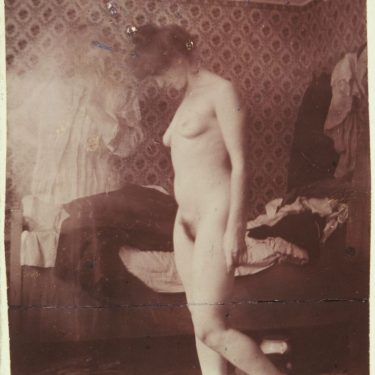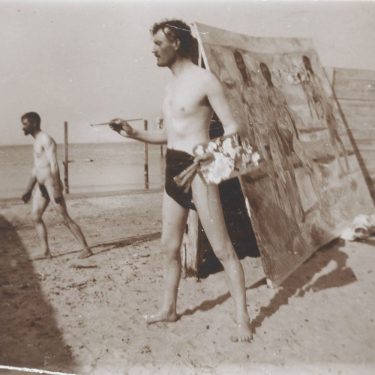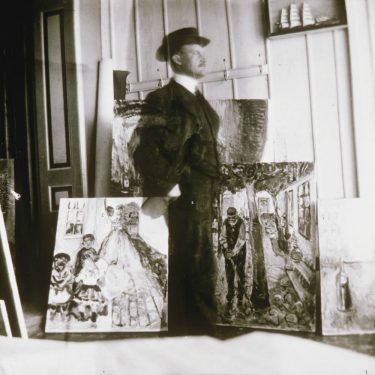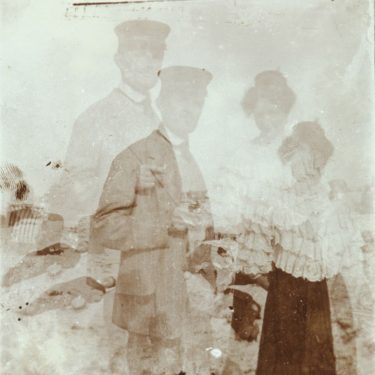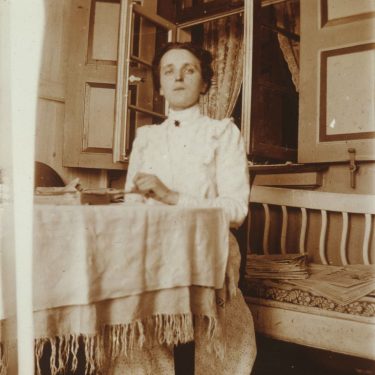Photo: Edvard Munch in front of his works, Am Strom 53, 1907
© Munch Museum Oslo
The Norwegian painter and graphic artist Edvard Munch (1863-1944) spent a total of eighteen months in Warnemünde between May 1907 and October 1908.
After lengthy restless stays in Berlin, Lübeck and Weimar, he chose Warnemünde in his search for a quiet place by the sea. The spa resort, already popular at the turn of the century, captivates the artist atmospherically. Here he hoped above all for physical and mental relaxation as well as intensive work.
In June 1907, the Warnemünde Bathing Gazette announces the arrival of the "Art Painter" from Norway in its guest list. After a short stay in "Hosmann's Hotel", he moves into the quarters of pilot Carl Nielsen in the house Am Strom 53.
Recreation ...
The painter found the ozone-rich air and the healing climate regenerating. The productive creative period in Warnemünde is reflected in the artist's sketchbooks, prints, lithographs, paintings and photographs. In addition to landscape paintings, genre views and portrait studies, important works such as the "Bathing Men" and the series "The Green Room" were created here, which allow conclusions to be drawn about the constitution and soul life of the painter.
Munch documented his work and the models in photographs. The various photos also provide an insight into the scenery of the spa at that time. Furthermore, over 100 diary entries and letters by Munch himself as well as relatives, friends and admirers provide an insight into the life, suffering and work of those 18 months in Warnemünde.
Visits from his admirers and patrons, such as Gustav Schiefler, Eberhard Griesebach and Albert Kollmann, who were also noted in the official lists of visitors to the town, were welcome and strengthening for the painter. He wrote to the Swedish collector Ernest Thiel: "Fresh air and good financial conditions have done great things. I am much better, I have been living on gruel, milk, bread and fish since the summer.... Now I am as if reborn".
... and relapse
The recovery in Warnemünde is only temporary; over time, signs of his unstable nervous condition become apparent again. New quarrels with old friends, fear of persecution and delusions make concentrated work and mental relaxation impossible.
The flood of bathers also robs him of his regained calm. "I have now packed up all my work in Warnemünde and will hardly ever stay there again. It's also a terribly bourgeois place and doesn't suit me!" In October 1908, Munch leaves Warnemünde to seek treatment at a nerve sanatorium in Copenhagen.
In Warnemünde, the artist's sudden departure leaves its mark. His landlord arranges the shipment of his art and personal belongings: "Now, if you should have any wishes from us, please write everything, we will be very happy to do it for you, just as well as if you did it yourself. To us, every letter and every written word from you is an immortalised memory of such a famous artist."
